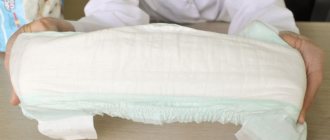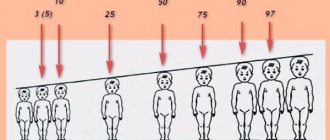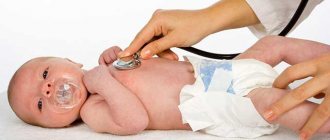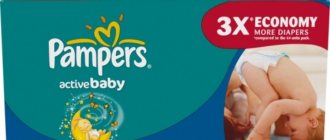Disposable diapers are one of the most important attributes for every newborn baby. However, few parents understand how seriously different diapers designed for girls and boys are. It should be noted that diapers are often called diapers thanks to the brand of the same name (Pampers), which was one of the very first to appear on the domestic market.
Diapers can be universal or special. Some models can be designed specifically for boys and girls. Why is the division of models by gender actively used? Why do you need to choose diapers depending on the gender of the child?
What are diapers?
Pampers (diapers) are hygiene products designed for babies. Such underwear is traditionally made in the form of panties or a wide band with Velcro on both sides. Starting from sizes 4–5, diapers can be not only universal, but also special (designed for boys or girls), but sizes up to 3 inclusive are only universal.
Diapers for boys
What are the criteria for choosing diapers?
1. Size - corresponds to the weight of the child.
The correct size is the key to the comfort of mother and baby.
Different manufacturers have different size ranges, so it is more convenient to focus on the designation of the corresponding parameters in kg.
The average weight of a full-term baby in the first days of life, according to the World Health Organization, is approximately 3 to 3.5 kg. But there are children both larger and smaller.
When choosing, it is more rational to focus on the upper limit of the size and features of the model pattern. If the child’s weight corresponds to the upper limit of the range and he is of average build, it is better to take the next one, because rapid growth rates in infancy.
Diapers No. 0 (weight up to 2.5 kg), as well as No. 1 (up to 5-6 kg) and No. 2 (up to 7-8 kg) are suitable for the smallest ones.
Size zero is usually used by premature babies who are significantly underweight.
A deuce is suitable for those babies who were born large and well-fed.
The main thing is that the mother does not experience any prejudices when choosing. For example, diapers for a newborn weighing more than four kilograms should be chosen in size 2. Even if the child was born just yesterday, this does not mean at all that only one will suit him.
2. Comfortable surface and softness.
The best diapers for newborns are pleasant and soft to the touch, and they always contain a cotton base. Products of this quality do not rub or provoke the development of allergic reactions, the baby’s movements are not constrained, and the skin “breathes.”
3. Absorption rate.
The quality of the diaper directly depends on the rate at which liquid is absorbed by the inner layer of the diaper. The baby's skin in the diaper must remain dry, otherwise such products should be discarded in order to prevent the development of diaper rash and irritation.
4. Moisture transfer of the diaper.
If you press a paper napkin onto a filled diaper, it should remain dry. If the areas on the napkin are wet, it means that the moisture transfer of such a diaper is unsatisfactory, it is better to replace it with a better quality diaper.
5. Reliable fasteners and elastic waistband.
6. No strong chemical odors.
7. Number of pieces and packaging volume
The younger the baby, the more diapers he uses per day. On average, it is necessary to change the diaper every 3-4 hours and after each bowel movement. Therefore, about 8-10 pieces can be used per day.
Most manufacturers complete large packages of sizes 0 and 1 (Mini or S) with 88-90 pieces each. Those. per month you will use three large packages (sometimes less, sometimes more).
8. Price for 1 piece.
You can choose the product you need in any of three price categories: economy, standard and premium. In our catalog you can sort products by price per 1 piece. — from 9 rub.
What is the difference between diapers for boys and girls?
- The main difference is the location of the absorbent layer . Girls can write for themselves, and boys can write ahead. For this reason, the absorbent layer is located in girlish models - in the middle and closer to the buttocks, and in boyish models - closer to the stomach.
- Diapers may have a special pattern. At the same time, models for boys always have a shape that is free in front.
- Diapers may also differ in appearance. In most cases, models for girls are made in pink with images of cartoon characters and a drawn bow on the back. Diapers for boys are made in blue, and not only cartoon characters, but also cars can be used in the form of a design.
Diapers for girls
Types of diapers for newborns
The abundance of absorbent disposable underwear for children can become a real problem of choice. Many popular manufacturers claim that their product is the best. In addition, the packages contain digital markings, which do not yet mean anything to inexperienced parents.
Structural features
Velcro diapers are convenient for children from 0 to 8 months. They easily adjust to the size of each little one’s tummy. Therefore, mom does not have to worry that the product will be too narrow or wide. The elastic bands on the legs are not too tight, which ensures a comfortable fit. Even little-known brands of diapers fit well on children and do not create discomfort.
After 7-8 months, babies begin to move actively. Mastered crawling turns a lying baby into an active apartment dweller. Putting on Velcro diapers becomes uncomfortable. For such babies, some manufacturers have developed panty diapers, which have elastic bands on the waist instead of Velcro. This greatly simplifies the task for the mother who is changing the little fidget.
Baby
The difference between disposable and reusable diapers
Along with the well-known disposable diapers, reusable models are popular. There is no information about them in the media, and therefore not all mothers and fathers know about their existence. Meanwhile, their use helps teach a child to use the potty and significantly saves the budget, eliminating the need to buy expensive disposable analogues.
Reusable diapers look like regular textile panties, only they have a lot of snap buttons on the waistband. Models such as disposable absorbent ones with Velcro are put on. At the bottom of the product there is a long pocket along the entire length of the groin. Replaceable absorbent wipes are inserted into this pocket. Comes with 1 pc. panties comes with 1 napkin. Absorbent tabs can also be purchased separately. The material of the panties cannot be called completely waterproof, but it holds moisture much better than regular cotton and, if changed in a timely manner, will prevent your clothes from getting wet.
Additional Information. The absorbent liners are washable. Once dry they are ready for use again.
Reusable Absorbent Briefs
Disposable diapers for newborns
Since babies require special care for the umbilical wound during the first two weeks of life, manufacturers have created models with special cutouts on the belt. Diapers for newborns have a lower waistband, which can be folded if necessary; a cutout under the navel will prevent the wound from becoming sour and will not injure it during use.
In addition, products for newborns are lined with cotton, and not synthetic material, as for older babies. The skin of a baby in the first month of life is especially vulnerable and needs tender care. Models for newborns breathe well and do not allow the dermis to swell.
Models for boys and girls
Many manufacturers took into account the anatomical features of babies of different sexes and developed models for each. Boys tend to wet the front of their diaper, unlike girls whose urine tends to accumulate at the very bottom of the diaper. If a girl lies on her back for a long time, urine collects in the back of her absorbent panties. Therefore, models for little gentlemen contain a large amount of sorbent in the front, while models for ladies have the same amount of absorbent material along the entire length of the diaper.
What are the benefits of diapers?
Diapers are required for every baby who can feel calm and comfortable. When choosing diapers, you can count on the child to always be dry and calm: there is no need to change the diapers every 15 minutes and then replace the onesies. Velcro and elastic bands will guarantee amazing comfort for the baby, because he will be able to move his arms and legs with ease.
Modern diapers can successfully prevent the appearance of diaper rash and diaper dermatitis. This is due to the following aspect: diapers have a special absorbent layer, as a result of which urine and other feces do not come into contact with the baby's skin. The ability to maintain dry skin avoids irritation and inflammatory processes, but for this, the use of diapers must be correct. What are the important application aspects to note? How to follow the basic rules?
- The diaper needs to be changed approximately every 3 hours. If the diaper is full or the baby has lost weight, it must be replaced immediately.
- 30-minute air baths will allow baby's skin to rest.
- Diapers must match the size of the child, so pressure and excessive freedom should be avoided.
How to choose a diaper - 5 tips
- Try two options
Try on several options. For example, your baby weighs 5 kg. You have two sizes that may fit: three to six and four to nine kilos. By wearing one and then the other and comparing both, you will know exactly which of the two fits better.
If you are buying baby supplies before giving birth, then it is optimal to choose a “genderless” diaper for 3-6 kg.
- Don't take too many packages
For parents suffering from lack of sleep and lack of time to go shopping, the idea of purchasing a lot of hygiene supplies at once and in advance is tempting, but when choosing diapers, buying several packages at once is a rash decision. Even the most praised brands may not be suitable for your child for various reasons: the pattern does not suit the body type, the material or impregnation causes allergies, the diaper simply puffs up where it shouldn’t, or again stretches in the wrong place.
- Save on absorbent
If your baby has frequent bowel movements, it makes no sense to purchase models with abundant absorbent. Every couple of hours the panties will have to be removed, which means that the absorption potential will not be even half used. For an older baby, buy more expensive diapers and wear them for a walk, during a visit or at night so that he does not wake up from discomfort due to wetness, but for a newborn, a child at home or while waiting for a bowel movement, wear simpler and more affordable products.
- Symmetry in Velcro
Diapers have a special strip (usually something cartoonish is drawn on it). This is your guide - the linden trees should be placed symmetrically on both sides of the center of the picture. The more mobile your child is, the higher the fasteners are located. Ideally, in addition to Velcro, there are elastic inserts on the sides that will stretch and contract as the baby moves, without pressing or cutting into his sides.
- Reusable fasteners
If you belong to the category of anxious mothers who look into the baby’s diaper at the tailbone every five minutes, checking the situation, then a reusable fastener on the diaper or a special pattern that appears when the absorbent gets wet will be an indispensable solution for you. Thanks to the marker, parents will be able to see when it is time to change the diaper without unfastening or bending the edge of the product.
How to choose a diaper
Are diapers harmful?
It is important to remember that infants have imperfect thermoregulation, so the body can quickly heat up. For this reason, important hygiene rules must be observed to prevent unwanted harm to the child. What reasons can lead to adverse consequences?
- Impaired tactile reactions . The baby needs the affection of the mother, contact with a variety of materials and his body. If such sensations are not achieved, a serious disruption of natural reactions will occur. If diapers are used for a long time, there is a risk of fear of new things and disruption of the emotional system. Such harm from diapers turns out to be quite obvious and understandable.
- Loss of urinary control . Children should not wear diapers after 2–3 years of age, as otherwise they will experience a decrease in self-esteem and mental disorders.
- Lack of opportunity to fully study the body in a diaper. The baby cannot form a full impression of his body, which results in developmental delays.
The Myth of Potty Difficulties
Of course, there is no need to wear a diaper before school, but there is no need to worry about the child not sitting on the potty on his own. Pediatricians are convinced that monitoring the urge to defecate and urinate depends largely on the maturity of the child’s nervous system and on the gentle help of parents. The child is ready to master the potty if he remains dry for 1.5-2 hours, finds a connection between the strange sensations in his tummy and wet panties, can take them off on his own, and if he generally understands the algorithm.
How should you make the right choice?
- The packaging of diapers must be complete.
- Pampers with strong fragrances and bright pictures are not recommended. Such models are always created on the basis of modern technologies, as a result of which they turn out to be undesirable.
- Preference should be given only to those diapers that are offered from world-famous manufacturers who have managed to establish themselves at a decent level.
Diapers are a special invention that is ready to please with convenience and maximum comfort.
Home and familyComment
Design
The last difference is the design. For girls, colorful, pink or yellow stickers with images of dolls or stuffed animals are placed on the front of the diapers. Boys are encouraged to look at cars, fairy-tale superheroes and other images that promote the development of “masculine” thinking.
There are also diapers from Merries or another manufacturer that differ in design. The girls' series contains a variety of diaper finishes so that parents can make a choice depending on their personal preferences and the preferences of their child. The baby will watch his favorite fairy-tale characters with interest and will stop being capricious when changing diapers.
What to look for when choosing diapers
There are different types of diapers, and often parents do not pay any attention to this when purchasing. A combination of small nuances allows you to choose the product that is most suitable for your baby. This is not only the size of the diaper, but also the composition and shape.
Child's age
Before buying a diaper, it is recommended to consider the age of the baby. A baby in the maternity hospital needs a smaller size. For older children, they buy diapers several sizes larger.
It is important to choose the right model for children under one year old so that they are comfortable.
Models
You should also pay attention to the shape of the diaper. For the summer, choose options that will allow air to pass through so that the skin can breathe. Manufacturers produce products in several lines. All are different in shape. The improved version is made in the form of panties that will not slip off the butt.
Size
The size of diapers is determined by the weight of the child. Most manufacturers use the following sizing system:
- 0 or SSS - considered the smallest, suitable for babies of the smallest weight and premature babies;
- 1, NB or SS - for 2-month-old babies;
- 2, S or mini - used at the age of 4 months;
- 3, M or midi - from 4 months to 1 year;
- 4, L or maxi - for children 8 months to 1.5 years;
- 5, Big or Junior - for wearing by children under 3 years old;
- 6, XL or junior extra - aged 4 to 7 years, also called super big;
- 7, XXL - up to 10 years.
The largest size is considered to be size 8, which cannot be found from every manufacturer. Weight category - 26 kg. Often used during adolescence.
Material
Cotton, cellulose and polyethylene are used to make diapers. The product is made from natural material and is soft and breathable. Considered the best for infants.
Cheaper - cellulose diapers. Despite the “unnatural” appearance, it is similar to non-woven fabric. Cellulose was chosen for the manufacture of children's hygiene products for a reason. It is safe and hypoallergenic. There are polyethylene diapers on sale. It is better to avoid such models. The material does not provide air exchange, as a result of which the skin suffers.
Fixation elements
Velcro, which is designed to better fix the diaper on the child's body, must be reusable. Their presence and functionality speaks about the quality of the company that produces hygiene products. Velcro will not irritate the skin. Equally important are the cuffs. These are soft elements that are located around the legs.
Some models have special elastic bands or a belt at the waist. With their help, the diaper holds better and retains absorbed liquid more reliably.
Absorbent material
One of the layers can be a fibrous filler or a gel in granules (in dry form). The latter is considered the most effective and differs in price. The absorbent substance should not only absorb moisture, but also distribute it evenly over the surface of the diaper from the inside.
Some models have a colored stripe in the middle. Over the years of use they have not shown their best side. The gel clumps into one lump and gets on the baby’s skin, which is unacceptable.
Additional properties
In addition to the above points, pay attention to other “functions” of the diaper. Some manufacturers leave a cutout for the navel. This will be useful for kids for whom it has not had time to last. The inner surfaces of diapers are treated with impregnations that have caring and antibacterial properties.
Experienced parents know that diapers should be worn on children only during the daytime. If the baby sleeps at night without them, the skin can fully breathe. In some cases, you will need to place your baby in a new diaper. Some babies also want to go to the toilet at night.
For such situations, a line of night diapers has been developed. Their price is slightly higher than usual. With their help, you can provide not only comfortable sleep for infants, but also for parents.
Pros and cons of using diapers
Both disposable and reusable diapers have their supporters and opponents. Each of these sides will present many arguments in favor of some and against others.
Advantages and disadvantages of disposable diapers:
| Positive sides | Negative sides |
| Save effort and free up time | Considerable financial costs |
| Comfort for the baby due to the ability to absorb moisture well | Unnatural composition |
| Don't get wet | May cause allergies |
| Disposable diapers for newborns make babies sleep more soundly | Have limitations in use (prematurity, diaper rash, dermatitis) |
| Not environmentally friendly (long decomposition period) | |
| May cause problems when learning to use the potty |
The oldest model of reusable diapers is gauze. In this case, it is difficult to talk about the pros and cons. Their positive aspects include only cost-effectiveness. There are more disadvantages - poor absorption and poor fixation. Immediately after getting the gauze diaper wet, you need to change all the baby’s clothes and bedding.
For newborns, you can use a cloth diaper. It holds better than gauze and has age restrictions for use (up to a maximum of 2 months). The pros and cons remain the same as in the previous version.
A more modern model is a knitted diaper with ties, consisting of a main part and a fixing part. Absorbency directly depends on its thickness.
The best option for opponents of diapers for newborns are reusable diapers of the natural changing system. They are panties and replaceable absorbent liners for them. The advantages of such diapers include the naturalness of the materials from which the part adjacent to the body is made. This eliminates the appearance of diaper rash.
The positive aspects of this diaper model include:
- hypoallergenic;
- efficiency;
- harmless to baby's skin;
- environmental friendliness;
- breathability.
The disadvantages include the need to constantly wash them, and the possibility of the diaper leaking, especially at night.
Definition
The diaper is a relatively young invention. 50 years have not yet passed since the first use of this product directly in caring for children, so it is too early to draw conclusions about their benefits or harm. Scientists believe that only after half a century can we talk about whether children's accessories designed to absorb excrement cause damage to health or, on the contrary, are created to alleviate the fate of parents and are not a threat to the child. Today we can only safely say that, according to statistics, children raised in diapers and using diapers are no different from each other. Moreover, those who were raised according to modern methods do not suffer from problems with the genitourinary system, at least no more than those who were raised the old way.
Trial and error method
For those who have never purchased such products for their child, it will be quite difficult to understand how “Pampers” differ from diapers. Photos are unlikely to help here. The only correct option is to select a comfortable modification. There is a fairly wide range of this kind of children's products on the market, and the completeness of the packs sometimes ranges from 7 pieces to 1000. For the first time, of course, it is worth purchasing small packages, and only then drawing conclusions about their quality. By the way, it would also be useful to try, because sometimes the fragrances used in production can irritate children's sensitive skin.
A stereotype that became entrenched with the advent of diapers in Russia
From all of the above, it is quite simple to draw a conclusion, because it suggests itself. The answer to the question of how diapers differ from diapers will be banal - nothing. It’s just that at the time when diapers entered the Russian market, one of the first products presented on the shelves of children’s stores were Pampers. So the buyer has a certain stereotype that diapers are nothing more than the notorious diapers. By the way, this word is so entrenched in the vocabulary of buyers in our vast country that many still associate it with diapers from other manufacturers. Another issue concerns the fact that different companies strive to bribe the buyer with innovative implementations that make their products an order of magnitude higher than their competitors. Therefore, later in the article it will be advisable to understand the differences between diapers in this particular industry using the example of recognized sales leaders.
Features and benefits of diapers
Every new mother knows what diapers are: they are multi-layered baby underwear designed to retain moisture (urine) and keep the baby and his clothes dry and clean. The product is represented by a combination of paper, absorbents, fabric and several silicone inserts.
There are two types of diapers: disposable (can be used once and then must be disposed of) and reusable (made from gauze or natural fabric, suitable for long-term use - they need to be washed periodically and can be used until the baby begins to get wet).
The main feature of the diapers is that they have Velcro fasteners, which allow you not only to quickly put them on the baby, but also to secure them conveniently for the baby. To prevent the process of putting on a diaper from causing unnecessary hassle and causing discomfort to the child, you must first lay him on his back. By the way, it is more convenient to do such manipulations with a baby at an early age.
Modern diapers come in a huge variety of brands, sizes and shapes, so every parent can choose the best option for their child. It is also important that the products are universal: they are suitable for both girls and boys.











